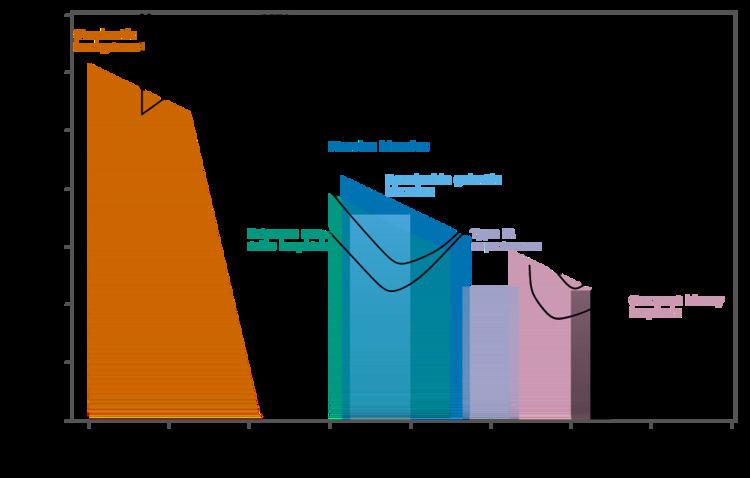 | ||
A pulsar timing array (PTA) is a set of pulsars which is analyzed to search for correlated signatures in the pulse arrival times. There are many applications for pulsar timing arrays. The most well known is to use an array of millisecond pulsars to detect and analyse gravitational waves. Such a detection would result from a detailed investigation of the correlation between arrival times of pulses emitted by the millisecond pulsars as a function of the pulsars' angular separations.
Millisecond pulsars are used because they appear not to be prone to the starquakes and accretion events which can affect the period of classical pulsars.
The most interesting influence on these propagation properties is low-frequency gravitational waves, with a frequency of 10−9 to 10−6 hertz; the expected astrophysical sources of such gravitational waves are massive black hole binaries in the centres of merging galaxies, where tens of millions of solar masses are in orbit with a period between months and a few years.
The gravitational waves cause the time of arrival of the pulses to vary by a few tens of nanoseconds over their wavelength (so, for a frequency of 3 x 10 −8 Hz, one cycle per year, you would find that pulses arrive 20 ns early in July and 20 ns late in January). This is an extremely delicate experiment, although millisecond pulsars are stable enough clocks that the time of arrival of the pulses can be predicted to the required accuracy; the experiments use collections of 20 to 50 pulsars to account for dispersion effects in the atmosphere and in the space between us and the pulsar. It is necessary to monitor each pulsar roughly once a week; a higher cadence of observation would allow the detection of higher-frequency gravitational waves, but it is unclear whether there would be loud enough astrophysical sources at such frequencies.
It is not possible to get particularly accurate sky locations for the sources by this method - analysing timings for twenty pulsars would produce a region of uncertainty of 100 square degrees, a patch of sky about the size of the constellation Scutum which would contain at least thousands of merging galaxies.
The main goal of PTA's is measuring the amplitude of background gravitational waves caused by a history of supermassive black hole mergers. The amplitudes can describe the history of how galaxies were formed. The bound on the amplitude of the background waves is called an upper limit. The amplitude of the gravitational wave background is less than the upper limit.
Some supermassive black holes binaries may form a stable binary and never merge called the “final parsec problem,” which is determining the events occurring when supermassive black holes approach each other.
While supermassive black hole binaries are the main source of very low frequency gravitational waves, other sources could generate the waves, for example cosmic strings, which may have formed early in the history of the universe. When cosmic strings interact, they can form loops that decay by radiating gravitational waves.
Active and proposed PTAs
Globally there are three active pulsar timing array projects. These three projects have begun collaborating under the title of the International Pulsar Timing Array project.
- The Parkes Pulsar Timing Array at the Parkes radio-telescope has been collecting data since March 2005.
- The European Pulsar Timing Array(EPTA) uses data from the four largest radio telescopes in Europe:
- Lovell Telescope
- Westerbork Synthesis Radio Telescope
- Effelsberg Telescope
- Nancay Radio Telescope.
- Upon completion the Sardinia Radio Telescope will be added to the EPTA also.
- The North American Nanohertz Observatory for Gravitational Waves uses data collected by the Arecibo and Green Bank radio telescopes.
